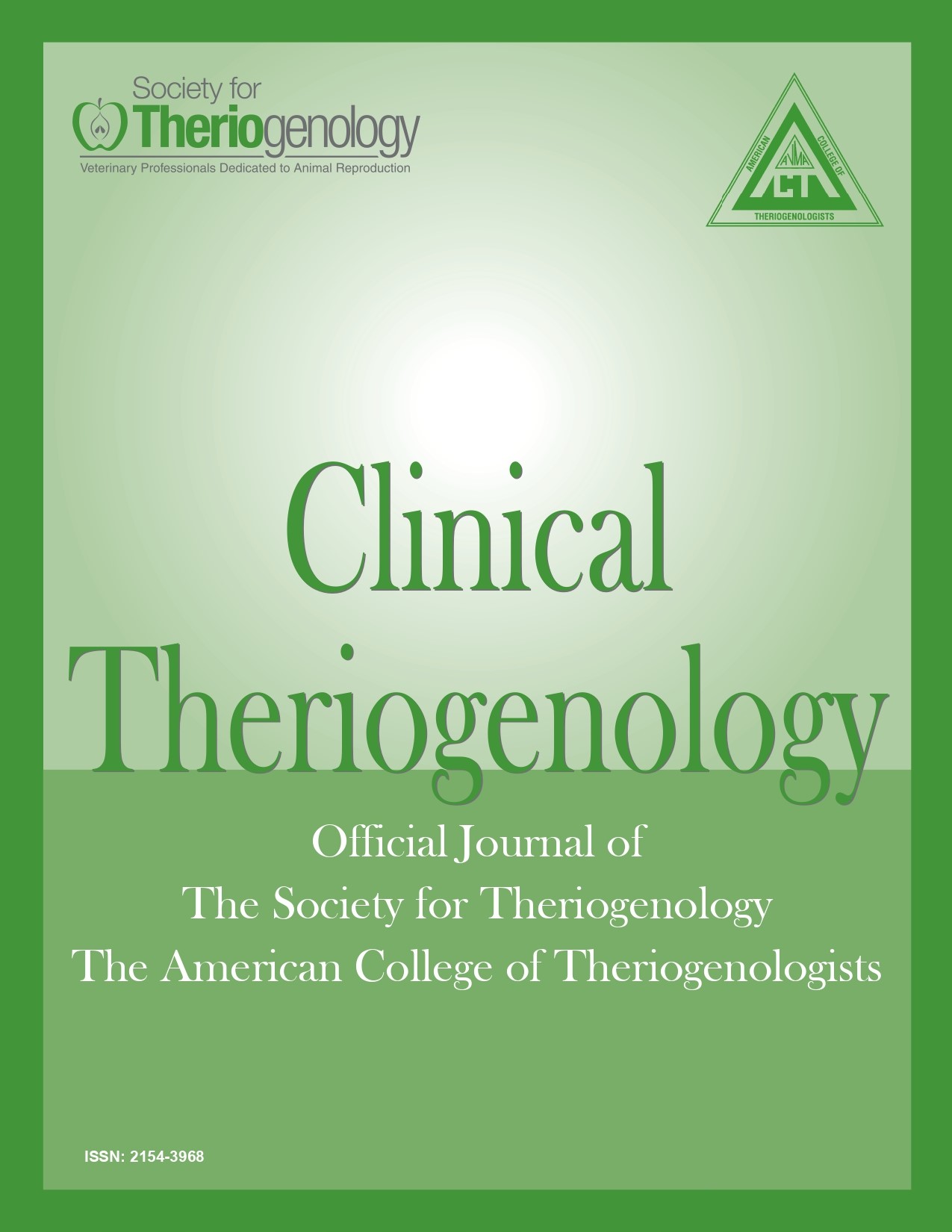Immunoglobulin G, white blood cell, and fibrinogen concentrations among dairy cows with and without endometritis during transition period
Abstract
Postpartum reproductive performance closely depends on uterine health. Under normal circumstances, almost 100% of cows have
uterine contamination within first 2 weeks after calving. Whereas the innate immune and reproductive systems usually eliminate
most offending microbes, persistent infection still reportedly occurs in ~ 20% of postpartum cows. Our purpose was to estimate
concentrations of systemic immune indicators (IgG, white blood cells, and fibrinogen) during the transition period in dairy cows
with and without endometritis. Fifty-nine multiparous cows were systematically and consecutively enrolled during the dry period
and examined 6 times from 40 days before to 40 days after calving. Cows in the diseased group (n = 11) were identified based on
4 criteria (presence of Trueperella pyogenes grade > 2 in the uterus, clinical endometritis, subclinical endometritis, and cervicitis).
Cows in the control group (n = 11) were negative for all 4 criteria. Prevalence of Trueperella pyogenes, clinical endometritis, subclinical
endometritis, and cervicitis was 25, 16, 23, and 31%, respectively. Concentrations of IgG, white blood cells, and fibrinogen did
not change over the period or vary among control and diseased cows. In conclusion, systemic indicators of inflammation were not
good markers for diagnosing or monitoring endometritis in postpartum dairy cows.
Downloads

This work is licensed under a Creative Commons Attribution-NonCommercial 4.0 International License.
Authors retain copyright of their work, with first publication rights granted to Clinical Theriogenology. Read more about copyright and licensing here.





